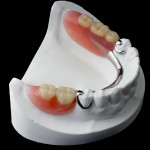
The Kennedy class I patient has bilateral edentulous areas posteriorly (fee-end saddles). Restoring these with partial removable dental prosthesis (PRDP) is typical treatment approach but some patients do not tolerate them. Placing distal implants can improve stability and patient satisfaction. The aim of this systematic review was to evaluate the evidence supporting the placement of a distal implant associated with a PRDP to improve patient satisfaction and the clinical performance of the abutment tooth and distal implant.
Methods
Searches were conducted in the PubMed and Cochrane Library databases for prospective controlled clinical studies and clinical studies reporting a comparison of patient satisfaction and clinical performance of Kennedy class I PRDPs associated with distal implants. Two reviewers independently conducted the searches, selected studies and carried out quality assessment. The Newcastle-Ottawa (NOS) scale was used to assess bias.
Results
- 15 studies involving a total of 163 patients were included; 7 retrospective studies, 1 crossover study, 2 case series, 2-paired clinical studies and 3 case reports.
- All 15 studies were considered to be at high risk of bias.
- Follow-up periods ranged from 2 weeks to 120 months.
- 4 studies (65 patients) used a visual analog scale to assess patient satisfaction describing an improvement in patient satisfaction after the placement of the distal implants associated with the PRDP.
- There was great variability in the type and size of implant used, lengths ranged from 6 to 13 mm and diameters from 3.3 to 6 mm
- Only 3 studies quantified masticatory performance by means of a food test or questionnaire.
Conclusions
The authors concluded:
The use of a PRDP associated with dental implants to convert a Kennedy class I to class III dental prosthesis benefits patients by improving their satisfaction and masticatory abilities without decreasing implant survival rates. Considering the abutment tooth survival rate, clinical studies with comparable methodology are still lacking to define protocols regarding the use of distal implants associated with PRDP. Long-term, prospective clinical trials are still needed to understand which implant abutments increase abutment tooth survival rate.
Comments
Only two databases are used in the search strategy for this review and only English language studies were included which raises the possibility that other relevant studies may be available. However, the databases uses would be the most likely to identify higher quality studies related to the reviewers’ question. The authors could, however, only identify a small number of small observational studies, so their conclusions need to be treated with a lot of caution. A recently published randomised controlled trial by McKenna et al (Dental Elf -11th Dec 2014) compared tradition RPD with restoration of a shortened dental arch (SDA) finding the SDA provided a significantly better oral health quality of life than removable dentures. More high quality randomised controlled trials are needed assessing both clinical outcomes and patient satisfaction and quality of life for a range of approaches for managing a range of restorative interventions.
Links
Zancopé K, Abrão GM, Karam FK , Flávio D. Neves FD. Placement of a distal implant to convert a mandibular removable Kennedy class I to an implant-supported partial removable Class III dental prosthesis: A systematic review. J of Prosthetic Dent. Available online 26th March 2015.

Don’t miss – Implants improve clinical outcomes for Kennedy class I patients http://t.co/bOyUko90j0 #EBP